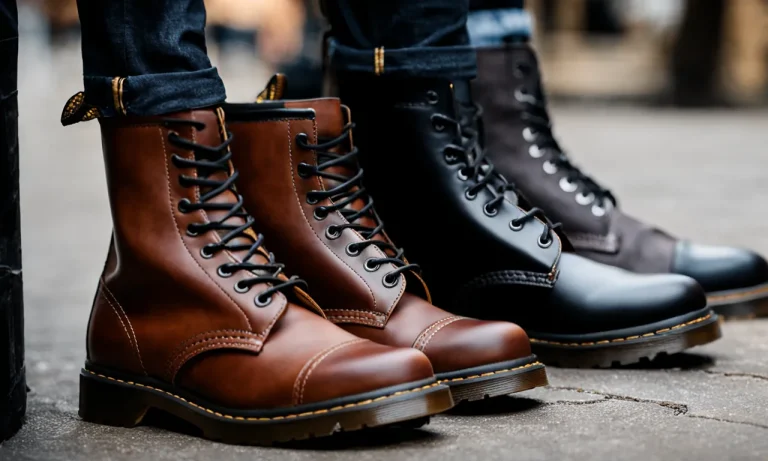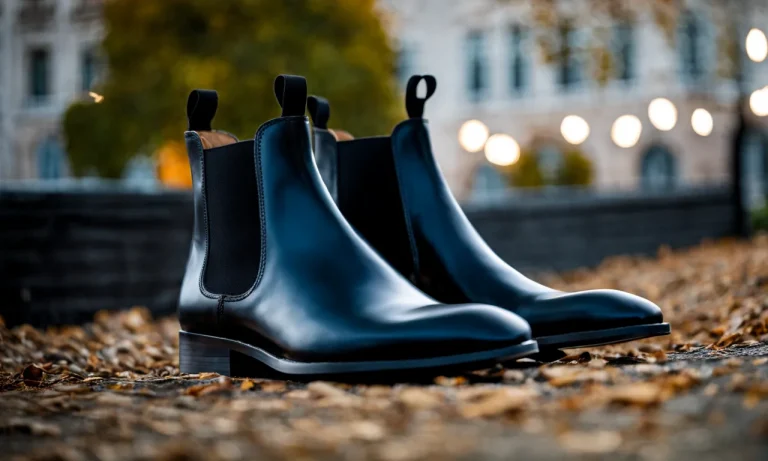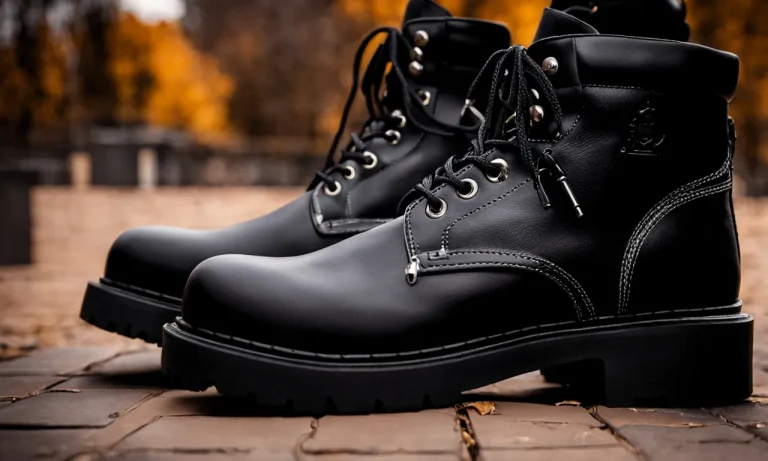Hitting the trails when there’s snow on the ground can be an exhilarating experience. The beautiful blanket of white transforms your favorite paths into a magical winter wonderland. But to safely and comfortably hike in snowy conditions, having the proper footwear is essential.
If you’re short on time, here’s a quick answer to your question: Yes, hiking boots can be used in snow as long as they have adequate traction and insulation. Look for boots with aggressive lug soles and waterproof materials.
In this comprehensive guide, we’ll cover everything you need to know about using your hiking boots in the snow. We’ll discuss how to choose boots with the right traction, warmth, and water resistance. We’ll also share tips on preparing your boots for snow and safely navigating snowy trails.
Key Features to Look for in Snow Hiking Boots
Deep Lugged Outsoles for Traction
When it comes to hiking in the snow, having proper traction is crucial for maintaining stability on slippery surfaces. Look for hiking boots with deep lugged outsoles that have aggressive tread patterns.
These deep lugs dig into the snow, providing excellent grip and preventing you from slipping and sliding. The more prominent and widely spaced the lugs are, the better the traction will be.
Waterproof and Insulated Materials
Snow hiking boots should be made from waterproof materials to keep your feet dry and warm throughout your adventure. Look for boots that are constructed with waterproof membranes or treated with durable water repellent (DWR) coatings.
Insulation is also essential to keep your feet cozy in freezing temperatures. Common insulation materials include Thinsulate, PrimaLoft, and Gore-Tex. Make sure the boots have an adequate insulation rating suitable for the climate you’ll be hiking in.
Ankle Support and Fit
When hiking in snow, ankle support is crucial to prevent injuries. Look for boots that provide excellent ankle support, preferably with high-cut designs. These boots offer stability and help prevent ankle twists or sprains while navigating uneven terrain.
Additionally, a proper fit is essential for comfort and preventing blisters. Consider trying on boots with thick socks to ensure the right fit, as your feet may swell in colder temperatures.
Remember, while these features are crucial for snow hiking boots, it’s also essential to consider your own preferences and hiking style. Always try on boots before purchasing them to ensure they fit well and provide the necessary support and comfort for your outdoor adventures.
How to Waterproof Your Hiking Boots
When it comes to hiking in wet or snowy conditions, having waterproof boots is essential. Without proper protection, your feet can quickly become cold, wet, and uncomfortable. Fortunately, there are several ways to waterproof your hiking boots and keep your feet dry throughout your outdoor adventures.
Use a Waterproofing Spray or Cream
One of the easiest and most effective ways to waterproof your hiking boots is by using a waterproofing spray or cream. These products are specifically designed to create a protective barrier on the surface of your boots, preventing water from seeping in.
To apply the spray or cream, simply follow the instructions on the product packaging. It’s important to note that different materials may require different types of waterproofing products, so be sure to choose one that is suitable for your boots.
Pro Tip: Look for a waterproofing spray or cream that is also breathable, as this will help to prevent your feet from becoming sweaty and uncomfortable inside your boots.
Try a DIY Waterproofing Wax or Oil
If you prefer a more natural approach, you can also try making your own waterproofing wax or oil to treat your hiking boots. Beeswax, lanolin, and various oils such as jojoba or coconut oil are commonly used ingredients for DIY waterproofing solutions.
Simply melt the wax or mix the oils together, and then apply the mixture to your boots using a clean cloth or brush. Allow the wax or oil to penetrate the material, and then wipe off any excess. This homemade waterproofing treatment can be just as effective as store-bought options, and it gives you the satisfaction of knowing exactly what you’re putting on your boots.
Fun Fact: Did you know that beeswax has been used for centuries to waterproof various materials, including leather and fabric?
Consider Waterproof Boot Liners or Gaiters
In addition to treating the exterior of your boots, you can also enhance their waterproofing capabilities by using waterproof boot liners or gaiters. Boot liners are typically made from materials like fleece or synthetic insulation and are designed to be worn inside your boots.
They provide an extra layer of insulation and can help keep your feet warm and dry. Gaiters, on the other hand, are worn over your boots and extend up to your calves. They are made from waterproof materials and are especially useful for hiking in deep snow or wet conditions, as they prevent water from entering your boots through the top.
Did you know? Waterproof boot liners and gaiters can also provide added protection against dirt, rocks, and other debris that might find its way into your boots during your hike.
Tips for Hiking in Snow
Plan Your Route Carefully
When hiking in snow, it is important to plan your route carefully. Consider the weather conditions, the length of the hike, and the difficulty level of the trail. It is also a good idea to check if the trail has been recently groomed or if it is marked.
This will help ensure that you stay on the right path and avoid getting lost in the snow.
Bring Traction Devices Like Microspikes
One of the most important things to remember when hiking in snow is to bring traction devices like microspikes. These small metal spikes can be attached to the soles of your hiking boots to provide extra grip on slippery surfaces. They are especially useful when hiking on icy or packed snow trails.
Websites like REI offer a variety of traction devices that can help you navigate snowy terrain with confidence.
Wear Warm, Quick-Drying Layers
Another essential tip for hiking in snow is to wear warm, quick-drying layers. Layering your clothing allows you to adjust your body temperature as needed. Start with a moisture-wicking base layer, add an insulating middle layer, and finish with a waterproof and windproof outer layer.
This will help keep you warm and dry throughout your hike. Additionally, wearing moisture-wicking socks and insulated gloves will help protect your extremities from the cold.
Watch for Hidden Obstacles
When hiking in snow, it is important to watch out for hidden obstacles. Snow can cover rocks, tree roots, and other hazards, making them difficult to spot. Take your time and pay close attention to the trail ahead.
Use trekking poles for added stability and to help detect any hidden obstacles under the snow. By being cautious and mindful of your surroundings, you can ensure a safe and enjoyable hiking experience.
Conclusion
When done safely with the proper gear, hiking in the snow can be an unforgettable experience. The stunning scenery and tranquility of the trails are well worth bundling up for. With waterproof, insulated boots that provide ample traction, you can comfortably trek through snowy conditions.
By choosing hiking boots with deep lug soles, waterproofing your materials, and being prepared for snow conditions, you can comfortably hit the trails no matter the weather. Just be sure to plan your route carefully and watch your footing.
Before you know it, you’ll be eager to lace up your boots at the first sign of snowfall. Happy hiking!






